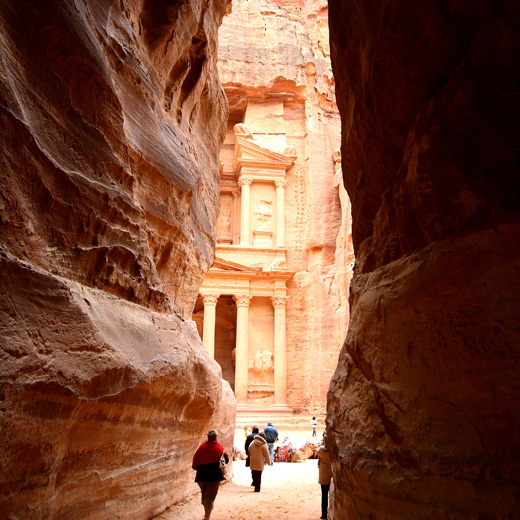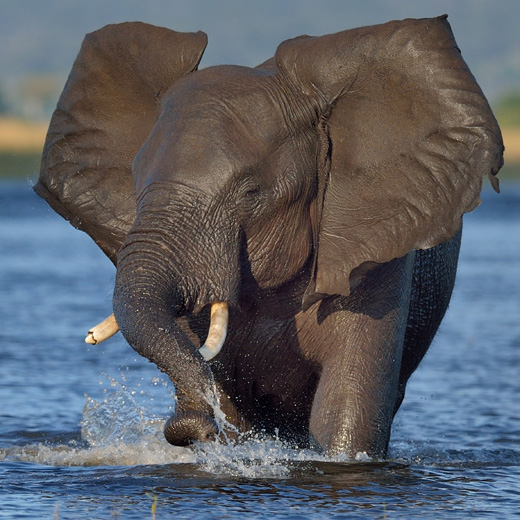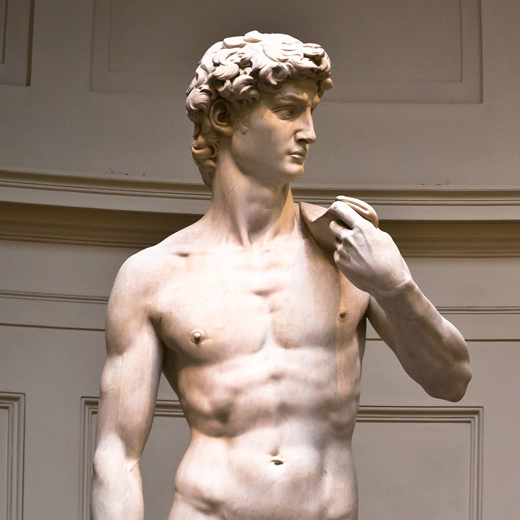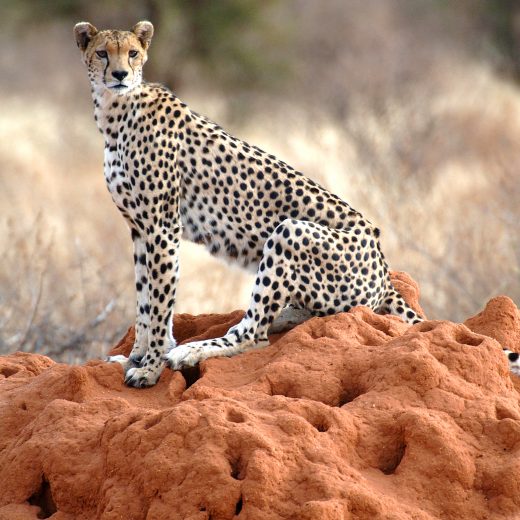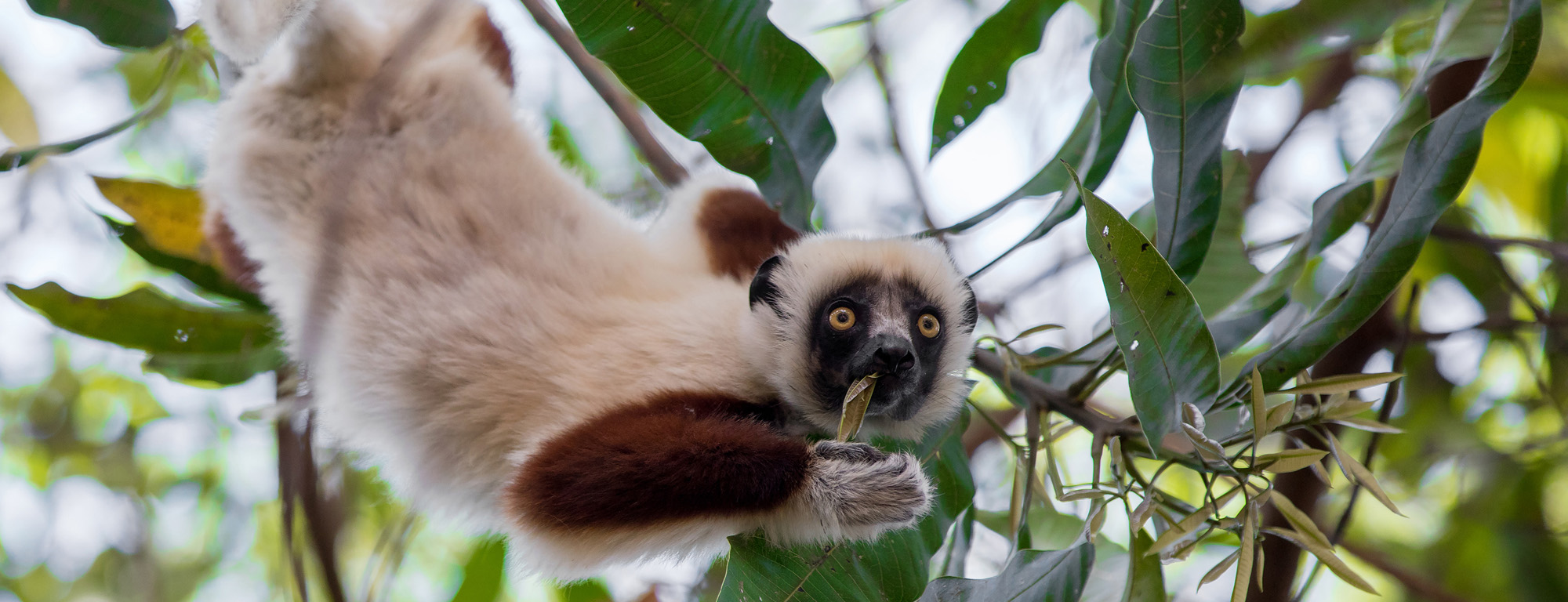
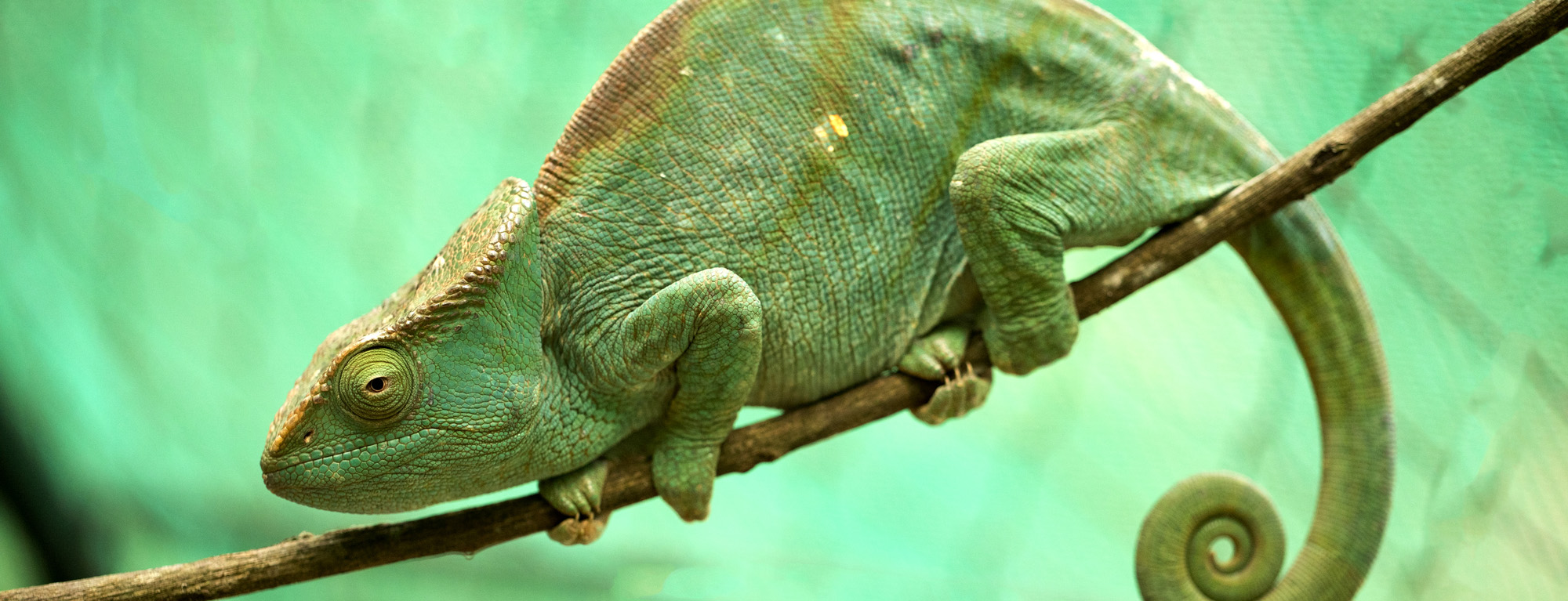
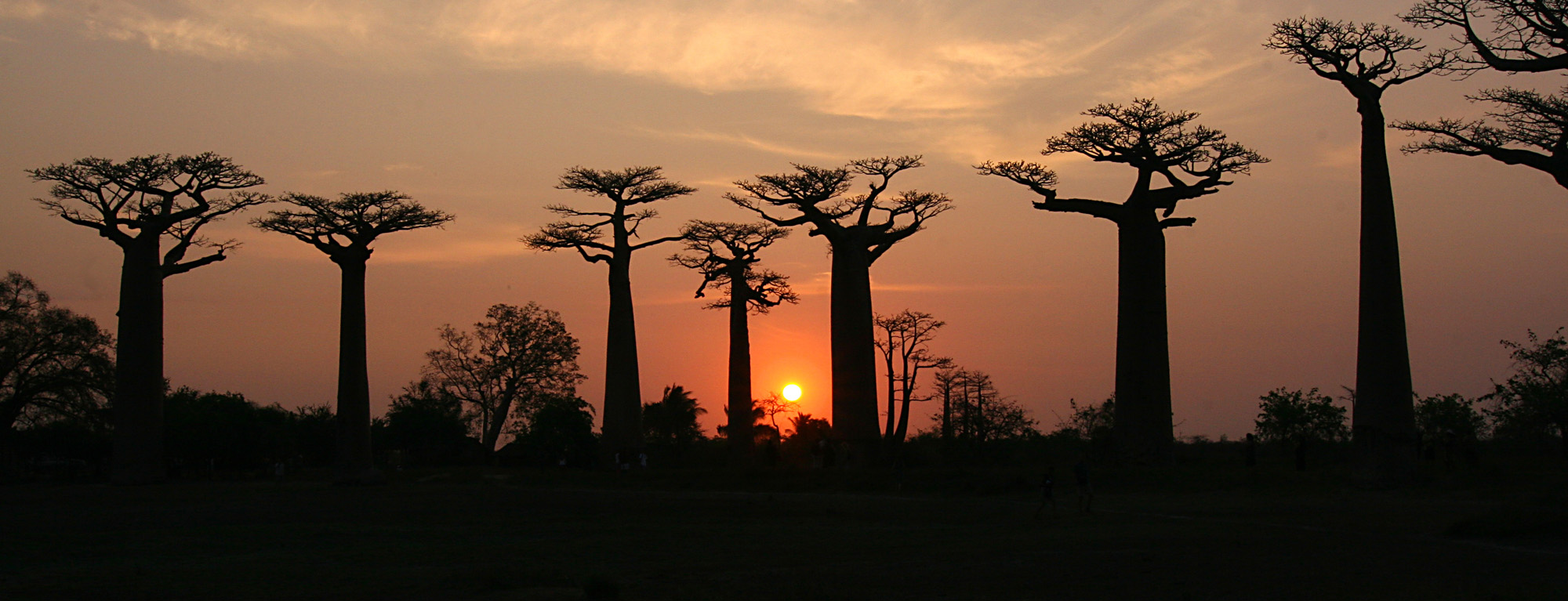
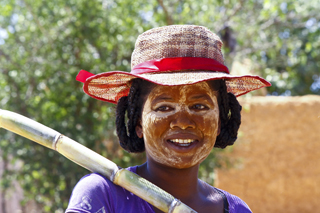
Note: Depending on flight schedule, it may take one or two overnight flights from the US.
Today arrive in Antananarivo (popularly known as Tana,) capital of Madagascar, where you are met by your naturalist and escorted to your hotel. A short drive from the airport through lush green rice fields will bring you into this charming city with its brightly colored houses stacked up the hillsides, and its deliciously foreign flavor. Your day will be at leisure to relax after your long flights and explore the city on your own.
Antananarivo is situated in the central part of the island, on the slopes of a rocky ridge that rises to about 4,700 feet. The city of 1,000 warriors takes its name from an episode in Malagasy history. When King Andrianjaka, who had called his people the Merina (highlanders) occupied the 12 sacred hills upon which Analamanga (where the forest is blue) was built, he had his royal palace and stronghold erected. One thousand warriors were quartered there and he called this city Antananarivo. The community grew in importance as the Merina dynasty, notably Radama I, gained control of most of the island in the 19th century. The French captured the city in 1895, and subsequently it became the capital of the French dependency of Madagascar. Today, the city is the chief economic, cultural, and administrative center of the country. It is the trade center for a rice-growing region, and industries here manufacture processed food, tobacco products, textiles, and leather goods.
Meet your fellow travelers this evening at your welcome dinner. Your home for the next two nights, The Louvre Hotel & Spa Antananarivo, is located directly across from Independence Square, in the heart of the business district. All rooms have satellite television, Wi-Fi, mini-bar, tea/coffee making facilities, and en suite bathrooms. This charming hotel houses a modern brasserie with huge windows overlooking the garden. Local coffee shops and several other restaurants in this vibrant neighborhood provide wandering guests with many options for an evening spent on the town. Overnight at the LOUVRE HOTEL & SPA.
Enjoy a sightseeing tour of the city, including Lake Anosy, the European district, the Botanical Gardens, Natural History Museum and the Zoo. Also visit the birthplace of the Malagasy state, Ambohimanga is 12 miles from the capital. Known variously as ‘the blue city’, ‘the holy city’ and ‘the forbidden city’, it is surrounded by forests. The citadel was an important Merina stronghold and retains several structures associated with their ceremonies. Its main gate is an enormous stone disc; 40 men were needed to roll it into position.
Next stop is Tsimbazaza, the only zoo of its kind in Madagascar. On November 1989, the WWF celebrated its tenth year in Madagascar by opening an environmental teaching center at the zoo. Malagasy people call it “park of Tsimbazaza” instead of a zoo. Tsimbazaza is a botanical and zoological garden with many specimens of the very peculiar Malagasy flora and fauna: lemurs, extraordinary chameleons, insects and birds. There is a skeleton of a giant extinct bird, the aepiorni, standing ten feet tall over its nine-quart egg (an ostrich egg measures a quart and a half). In addition to the awesome natural surroundings, Tsimbazaza Zoological and Botanical Garden also has an outstanding museum with fascinating displays to enjoy. Overnight at the LOUVRE HOTEL & SPA.
Your drive takes you to Andasibe (89 miles /3 hours), with a stop in Marozevo for a short visit of the private reserve, “Pereyras.”. This park is owned by a prominent naturalist to help preserve many endemic species of animals. Chameleons, butterflies, insects, geckos, and frogs can be seen inside this park.
Continue with your drive to the National Park of Andasibe, also known as Parc National d’Andasibe-Mantadia, featuring 31,654 acres of lushness and encompassing two distinct areas: the small Réserve Spéciale Analamazaotra (often referred to as Périnet), and the much larger Parc National de Mantadia.
This park is known for its rare orchids that bloom in the forest, its beautiful waterfalls and the famous cultural rituals of the inhabitants of the surrounding area.
As far as fauna is concerned, the forest ensures life to many animals by providing shelter. There are 108 bird species known in the park, some of which play a role in the survival of plants. There are also 14 species of lemurs, 51 species of Boa reptiles, and 84 species of amphibians. In rivers there are several endemic fish species, two of which are classified as endangered by the International Union for Conservation of Nature (IUCN).
In Périnet you’ll have the opportunity to see the largest species of the lemur family, the indri (called Babakoto in Malagasy, which means man of the forest or little father.) Three feet tall, with black and white markings, the indri has an ear-shattering, eerie, wailing sound, somewhere between the song of a whale and a police siren, making this lemur extra unique. There are nine different species of lemurs in Perinet, where you may be able to see the brown lemur, the mouse lemur, and the dwarf lemur. The largest of the chameleons’ lives here and the bird watching is superb: blue couas, vangas, blue pigeons, paradise flycatchers, falcons, black vasa Parrots, cuckoo-rollers, nightjars, and sunbirds.
Mantadia National Park was created in the 1990s and lies roughly 13 miles north of Perinet. Due to its considerably larger size and untouched primary rain forest, Mantadia’s wildlife is more diverse than Perinet’s. Indri, diademed sifakas, and black-and-white ruffed lemurs can be found here, although seeing these animals will require some effort as you follow them on steep and narrow trails.
Surrounded by jungle and forest, Vakona Lodge is perfectly situated for day trips to the surrounding areas. The lodge also has its own small reserve, which offers an excellent close-up experience with a troupe of superb black-and-white ruffed and brown lemurs. Accommodation is offered in 24 bungalows, all designed with a delightful “rustic” charm that is perfectly in keeping with the location. The main building has been thoughtfully designed as an octagonal reception area, bar and lounge-dining room with a huge log-fire in the middle. The hotel also boasts a curio shop, swimming pool, squash courts and offers horseback riding and forest trekking. Overnights at the VAKONA LODGE.
Today’s drive (196miles/ 5 ½ hours) takes you to the beautiful city of the Highlands of Madagascar, Antsirabe, a result of mixed cultures. The city reflects the warmth of its people and the authenticity of its traditions still alive in the surrounding countryside. Famed for its “pousse pousse”, gemstones and handicrafts, the wide tree-lined avenues invite you to discover its workshops where people work on transforming natural materials like zebu horn (for cutlery) or wheat straw (for hats).
You will spend the night in a boutique style hotel just 1,640 feet from the busy town center. Couleuer Café has 15 spacious and comfortable bungalows built of brick, tile and wood. The bungalows are spaced around the delightful and colorful gardens and offer privacy. The rooms have high ceilings and are light and airy. Each room has its own decor that showcases local crafts and Malagasy materials. The main lodge houses the dining room, bar, lounge and a small gift shop. Overnight at COULEUR CAFÉ. www.couleurcafeantsirabe.com
Drive (200 miles/4-5 hours) to Ranomafana National Park, home to the golden bamboo lemur, often found grazing amongst the bamboo thickets. En route you will stop by the center of Malagasy hand sculptured wooden craft work called Ambositra town. There are many shops here where you can browse for souvenirs.
Your second day here is dedicated to explore the natural reserve of Ranomafana located in the Fianarantsoa Province of southeastern Madagascar. In 1986 the critically endangered golden bamboo lemur was discovered here by Dr. Patricia Wright, a fact that definitely pushed the government to create a national park to preserve two of Madagascar’s endangered lemur species, the golden bamboo lemur and the greater bamboo lemur. Here, you can also spot the eastern woolly lemur, red bellied lemur, eastern grey bamboo lemur, greater bamboo lemur, redfronted brown lemur, black-and-white ruffed lemur, Milne-Edward´s sifaka, small-toothed sportive lemur, greater dwarf lemur, brown mouse lemur and the very rare aye-aye.
Ranomafana National Park spreads on 98,482 acres and was classified World Natural Heritage of the Atsinanana in 2007. Ranomafana is full of originality and variety. Botany, ornithology, herpetology, cultures are fascinating attractions which captivate you in this tropical rainforest. Flora and fauna are among the most varied while being unique. This area is great for spotting the majestic creatures, as well as being great for birding. Rufousheaded round Roller, Parson’s chameleon, Madagascar tree boa, three species of leaf-tailed gecko and numerous frogs can be found here. The reptiles, butterflies and other insects are also outstanding. Chameleons are here the most colorful and attractive. The park is also the genetic reservoir of some rare and endemic plant species. In the undergrowth, pandanus, ferns, orchids, lianas and strangler figs accentuate the tropical forest.
This Mecca for bird watching has over a hundred different bird species that you can watch and listen, especially in SeptemberOctober. Thirty-six of these exist exclusively in the primary forest of the park, so it’s certainly worth keeping a pair of binoculars handy; a flash of color among the trees could be a sunbird asity, a flicker of movement on the forest floor a pitta-like ground roller.
The forest of Ranomafana is a rainforest. Although much of the region has been logged, the easternmost part of the Ranomafana retains a relatively large area of primary forest. You can find the Apocynaceaes, Euphorbiaceaes and Rubiaceaes. The most common épiphytes is Asplenium nidus of the family of the Aspleniaceaes and the orchids of the Bulbophyllum kinds, Angraecum, Aeranthes, Aerangis and Jumellea.
Apart from visiting the national park, you can also visit the village with its hot spring. ‘Rano’ is Malagasy for water, while ‘mafana’ is Malagasy for hot. About a hundred years ago a Malagasy discovered hot springs down in the valley, and the French created a spa around them. The town is now known as Ranomafana.
A night walk is also planned inside the park to spot nocturnal lemurs and frogs and if lucky, fossas, the only endemic carnivorous species of Madagascar. During the night you may see the greater dwarf lemurs, woolly lemurs, sportive lemurs, and tiny brown mouse lemurs leaping from tree to tree. The extraordinary looking nocturnal aye-aye can also be found in the park, but sightings of it are very rare.
Your home for the next three nights is a comfortable rainforest lodge that is built on a hillside close to the entrance of Ranomafana National Park and near to Ranomafana Village. Your rooms in the main lodge are basic but cozy and offer comfortable amenities including air-conditioning, en-suite bathroom and mosquito netting. The lodge has a spacious restaurant with veranda, bar and gift shop all built in a tropical setting offering spectacular views. Overnights at CENTREST SEJOURS.
After breakfast drive to Ranohira (231 miles/7 hours), with stopping at Antaimoro paper fabric and Anja Park in Ambalavao. Arrive at Ranohira in the late afternoon were the rest of your day is at leisure.
You will spend the next two nights in this stunning area at Le Jardin du Roy. Your hotel is built into the rocks on the edge of the Park and fully integrated in Isalo. The lodge offers 15 spacious and luxurious rooms, each with a private terrace overlooking the sights of Isalo. Le Jardin du Roy also has a pool in the gardens as well as a dining room and bar. Spa and massage service is available. Relax on your own private verandah and watch the sunsets on the panoramic cliffs before you or take a ride on horseback (at add’l cost) or hike in the surrounding countryside. Overnight at the LE JARDIN DU ROY.
www.lejardinduroy.com
After breakfast you board your vehicles and drive to Isalo National Park, noticing the change in scenery dominated by granite domes and expansive golden rice fields as well as the change in people. Here you will see the Bara tribe, known as cattle herders, who carry spears for protection against enemies. Zebu (cattle) stealing is part of the process of becoming a man in this region and is necessary to obtain approval from a family to marry their daughter. The terrain as you continue is more desert-like, allowing the sky to fill with all the radiant colors of the setting sun. One of the most frequented national parks in Madagascar, Isalo National Park is a spectacular site, quiet and full of mysteries. Established in 1962, this massive park covers 315 square miles, its rocks dating from the Jurassic Period. These rocks (known as “ruiniformes”) have been sculpted by wind and water into weird and wonderful shapes: eyes, beaks, and faces. It is quite surprising to find a place like Isalo in Madagascar, and most first-time visitors to the country come expecting tropical beaches, rain forests, and, of course, lemurs. And there are, in fact, many to be found in Isalo!
Awaken to the view of the sandstone canyon massif, markedly different from any place you’ve visited so far on the trip and impressive in its grandeur and unusual eroded shapes. Succulents and fire resistant trees, such as the tapia, on which the endemic silkworms feed, are native here. In the early morning the black kite will soar regally overhead as if it owns the desert sky. The endemic Benson’s rock thrush is found only in this area and will be heard singing in the morning from the prominent rock perches. Spend your days here exploring the park looking for ringtails, sifakas, and brown lemurs.
At the Isalo Interpretation Center, learn about the local indigenous tribes whose mysterious burial sites are found here. At sunrise hear the song of the endemic Benson’s Rock Thrush and watch the skies for the Black Kite soaring overhead Overnights at the LE JARDIN DU ROY.
Your drive (150 miles/4 hours) takes you to Tulear, known as “the white city” or “sun city,” an oasis of sandy beaches, friendly people, and the third largest coral reef system in the world. The city offers a thousand bright colors, a concert of rhythmic ambience made by the Tsapiky music that, surging through the streets, emphasizes the sensual quality of the culture and the gentleness of its inhabitants.
Visit the Arboretum d’Antsokay, a private reserve established around 1980 at the initiative of a Swiss amateur botanist, Herman Petignat. It encompasses an area of 120 acres and is located 7.5 miles southeast of the town of Toliara. More than 900 species of plants are being preserved there, of which 90% are endemic to the region and 80% have medicinal values. Among them, many succulent species are listed as threatened.
The Moringa Hotel is located in Tulear center. This newly opened property has spacious and comfortable rooms with en-suite facilities and private verandahs facing the city. Overnight at the MORINGA HOTEL.


